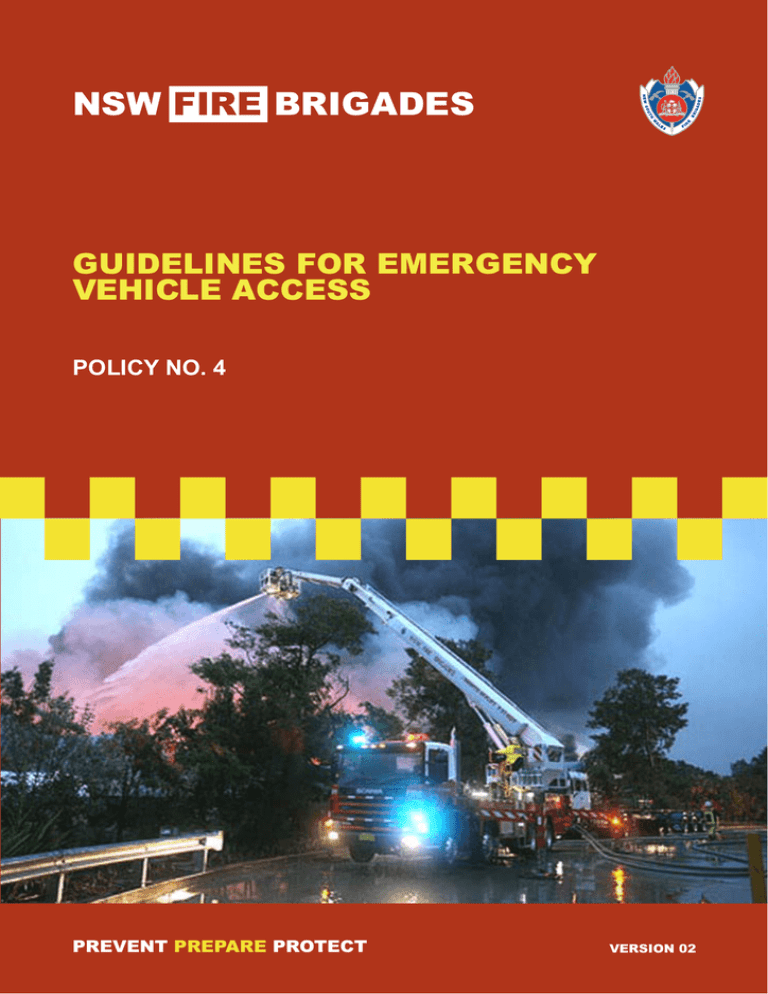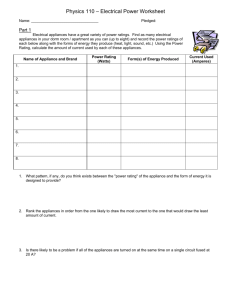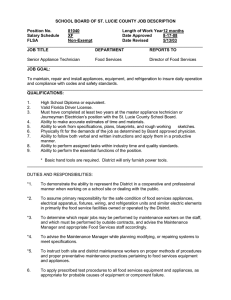
NSW FIRE BRIGADES
GUIDELINESFOR
FORMINOR
EMERGENCY
GUIDELINES
VEHICLE ACCESS
RESIDENTIAL
DEVELOPMENTS
POLICY NO. 8
POLICY NO. 4
PREVENT PREPARE PROTECT
VERSION
VERSION 01
DRAFT02
D
POLICY NO. 4: GUIDELINES FOR EMERGENCY VEHICLE ACCESS
© Copyright State Government of NSW (NSWFB) 2010
All rights reserved. The information contained in this report is provided to inform. Apart from any use as permitted under
the Copyright Act 1968, no part of this report may be reproduced or transmitted in any form or by any means, electronic
or mechanical, including photocopying, recording, or any information storage and retrieval system, without permission
in writing from the New South Wales Fire Brigades (NSWFB).
Published by:
Structural Fire Safety Unit
New South Wales Fire Brigades
Amarina Avenue
Greenacre NSW 2190
Telephone: (02) 9742 7400
Facsimile: (02) 9742 7483
Email: firesafety.NSWFB@fire.nsw.gov.au
Version
Date
Reviewed by:
Authorised by:
01
17 JUL 2007
MSFSU
DRM
01.01
25 JUN 2008
A/MSFSU
A/MSFU
02
27 OCT 2010
MSFSU
MSFSU
CONTENTS
I
PAGE
1
SCOPE
1
2
APPLICATION
1
3
DEFINITIONS
1
4
NSWFB APPLIANCES
2
4.1 Types of NSWFB Appliances
4.2 Appliance Type Coverage
2
3
5
ACCESS REQUIREMENTS
4
5.1
5.2
5.3
5.4
5.5
5.6
Carriageway Widths
Turning Areas
Ensuring Clear Access
Kerb Dimensions
Building and Structure Clearance Height
Gradients (e.g. Access Ramps)
4
5
5
6
6
6
6
APPLIANCE WEIGHTS (LOADS)
7
6.1 Static Loads of Appliances
6.2 Dynamic Loads (on Aerial Appliances)
7
8
7
9
REFERENCES
PREVENT PREPARE PROTECT
POLICY NO. 4: GUIDELINES FOR EMERGENCY VEHICLE ACCESS
1
Scope
This document details NSW Fire Brigades (NSWFB) requirements for emergency vehicle access,
including general access to a specific site or premises, and access around buildings or structures
within a site (allotment).
2
Application
This document should be used as a reference by developers and planners to ensure NSWFB
emergency vehicles can adequately access sites, buildings and structures in the event of an
emergency (e.g. fire, explosion).
Note: Emergency vehicle access may be specifically required by the Building Code of Australia.
During an emergency, the NSWFB is most efficient and effective when there is suitable provision
for rapid and unhindered response by its emergency vehicles. Poor or inadequate access can
result in a delayed NSWFB response, with the obvious delay to intervention having a direct impact
on the life safety of occupants and the protection of property.
Note: Due to the nature of the functions required to be performed, NSWFB emergency vehicles
are generally larger and heavier than those used by other emergency services.
The provision of emergency vehicle access is considered relevant for all development and
planning. Site managers should ensure adequate emergency vehicle access is provided.
Existing sites and facilities should maximise compliance with the requirements of this document
(e.g. ensuring carriageways are not obstructed by parked vehicles).
This document is ‘informative’ and does not replace any statutory requirement. These guidelines
are intended to inform regulatory authorities when considering the provision of emergency vehicle
access.
3
Definitions
The following definitions apply in this document;
(a)
Aerial appliance — a specialised emergency vehicle which has an aerial
apparatus which elevates to height for suppression and/or rescue.
(b)
Allowable Bearing Pressure — the calculated pressure required to counter
compression forces exerted by dead loads (i.e. the minimum strength required to
maintain stability under a weight load).
(c)
Appliance — an emergency vehicle which provides fire fighting, rescue or
HazMat capability.
(d)
Carriageway — any construction specifically designed to be traversed by
vehicular traffic (may or may not include a sealed top surface layer).
(e)
Stabilisers — fitted to aerial appliances to provide stability when the vehicle’s
centre of gravity shifts during the operation of the aerial apparatus.
(f)
Vehicle hardstand area — as area of carriageway designated for use by an
emergency vehicle (e.g. at a booster assembly).
NSW FIRE BRIGADES
1
POLICY NO. 4: GUIDELINES FOR EMERGENCY VEHICLE ACCESS
4
NSWFB Appliances
4.1
Types of NSWFB Appliances
The NSWFB fleet consists of many different types of vehicles which are designed to perform
specific functions at an emergency incident. Such vehicles are collectively known within fire
service agencies as ‘appliances’.
The vast majority of NSWFB appliances comprise a specially built body fitted on a two (2) axle
heavy vehicle chassis. Depending on the function of each vehicle, various levels of fire fighting,
rescue or HazMat capability are provided by way of equipment carried (see Figure 1 below).
Note: The core function of general appliances is fire fighting, however some are dedicated to
providing only rescue or HazMat capability.
Figure 1 Examples of General NSWFB Appliances
While specifications vary between general appliances, the maximum parameters (i.e. worst case
scenario) for this group of vehicles is as follows:
Gross Vehicle Mass
Maximum Overall Length
Maximum Overall Width
15 000kg
10.1m
2.5m
Some NSWFB appliances perform specialised functions in the event of an emergency. An aerial
appliance has a specially built apparatus which elevates, telescopes and/or articulates to height
for fire suppression of a large premises, or to rescue trapped occupants in multi-storey buildings.
Note: The functions of an aerial appliance requires that it is able to get relatively close to the
building or structure that it needs to attend.
2
PREVENT PREPARE PROTECT
POLICY NO. 4: GUIDELINES FOR EMERGENCY VEHICLE ACCESS
Aerial appliances are larger and heavier than general appliances, and may be on either a two (2),
three (3) or even four (4) axle heavy vehicle chassis (see Figure 2 below).
Figure 2 Examples of NSWFB Aerial Appliances
Aerial appliances are strategically located for optimum response to areas with greater fire risks
(e.g. mid-rise building, high rise buildings, heavy industry areas). Most aerial appliances are
located in the greater metropolitan region and some large regional cities.
While specifications vary between aerial appliances, the maximum parameters (i.e. worst case
scenario) for this group of vehicles is as follows:
Gross Vehicle Mass
Maximum Overall Length
Maximum Overall Width
27 500kg
12.4m
2.5m (6.0m when stabilisers are deployed)
4.2
Appliance Type Coverage
All sites, buildings and structures across the whole state of NSW should ensure general NSWFB
appliances are given adequate access in the event of an emergency.
When applicable, developers and planners must also ensure that adequate access is provided for
aerial appliances. The location of the site must be within the coverage area of an aerial appliance,
and the buildings or structures likely to require an aerial appliance during an emergency.
Note: The entire greater metropolitan region of Sydney, Newcastle and Wollongong, and some
large regional cities (e.g. Albury), has aerial appliance coverage.
To determine whether aerial appliance access is necessary for a given site, contact the NSWFB
Structural Fire Safety Unit in writing at:
Manager Structural Fire Safety Unit
Private Locked Bag 12
Greenacre NSW 2190
NSW FIRE BRIGADES
3
POLICY NO. 4: GUIDELINES FOR EMERGENCY VEHICLE ACCESS
5
Access Requirements
5.1
Carriageway Widths
Carriageways should be wide enough to allow appliances to easily negotiate them and provide
sufficient room to allow vehicle crews to work with fire fighting equipment around the vehicle.
Note: During an emergency, appliances will park along the carriageway in the most tactically
advantageous position.
Along straight carriageway sections, a minimum width of 4m should be provided for general
appliance access, and a minimum width of 6m for aerial appliance access (see Figure 3 below).
GENERAL APPLIANCE
ACCESS
Minimum 4m
AERIAL APPLIANCE
ACCESS
Minimum 6m
Figure 3 Minimum Carriageway Widths — Straight Sections
Note: Aerial appliances require additional width to fully extend their stabilisers. Where a
continuous clearance of 6m cannot be provided, consideration should be given to allocating
designated areas for aerial appliance operation.
Along curved carriageway sections, a minimum inner radius of 6.3m and outer radius of 11.3m
should be provided for general appliance access, and a minimum inner radius of 7.3m and outer
radius of 14.6m for aerial appliance access (see Figure 3 on page 4).
The distance between inner and outer turning arcs must allow for expected vehicle body swing.
The minimum distance between the inner and outer arcs should not be less than 5.0m for general
appliances and 7.3m for aerial appliances (see Figure 4 on page 5).
4
PREVENT PREPARE PROTECT
POLICY NO. 4: GUIDELINES FOR EMERGENCY VEHICLE ACCESS
Min. 5.0m
GENERAL APPLIANCE
ACCESS
Min. 6.3m
Min. 11.3m
Min. 14.6m
Min. 7.3m
AERIAL APPLIANCE
ACCESS
Min. 7.3m
Figure 4 Minimum Carriageway Widths — Curved Sections
Note: The radius dimensions given are for wall to wall clearance where body overhangs travel a
wider arc than the wheel tracks (vehicle turning circle).
5.2
Turning Areas
Any carriageway not leading directly to an exit (i.e. dead end) should be provided with a turn
around area which prevents the need to perform multi-point turns.
The minimum turning radius of turn around areas should be no less than 11.3m for general
appliances, and 14.6m for aerial appliances (refer to Figure 4 above).
5.3
Ensuring Clear Access
Site managers should ensure carriageways are not fully or partially obstructed in a manner which
prevents unhindered access by appliances, at any time.
Note: Carriageways can be obstructed by parked vehicles, shipping containers, pallets, stored
goods, industrial bins etc.
Perimeter security points (e.g. sliding/swinging gates, boom gates, bollards, vehicle security
barriers) must not unnecessarily impede appliances from gaining access. A minimum width of
3.2m should be provided at security points to allow appliances passage without the need for
manoeuvring.
NSW FIRE BRIGADES
5
POLICY NO. 4: GUIDELINES FOR EMERGENCY VEHICLE ACCESS
5.4
Kerb Dimensions
All kerbs constructed along the edges of a carriageway should be no higher than 250mm and
should be free of vertical obstructions at least 300mm back from the kerb face to allow clearance
for front and rear body overhang.
Min. 300mm
Max. 250mm
Road
Kerb
Figure 5 Carriageway Kerb Clearance Dimensions
5.5
Building and Structure Clearance Height
An unobstructed clearance height of 4.5m should be maintained above all access ways including
clearance from building construction, archways, gateways/doorways and overhanging structures
(e.g. ducts, pipes, sprinklers, walkways, signs, beams).
Min. 4.5m
GENERAL APPLIANCE
ACCESS
AERIAL APPLIANCE
ACCESS
Figure 6 Building and Structure Clearance Heights
5.6
Gradients (e.g. Access Ramps)
The NSWFB prefers a ramp gradient of 1:8 or less. The maximum negotiable ramp gradient is
1:6 (see Figure 7 on page 7).
Access ramps which follow a curved or circular profile in plan view should have a maximum
gradient no greater than 1:10 (measured along the centre line).
Note: The chassis of an appliance will twist and flex when negotiating the ramp, thus a lower
gradient is necessary.
6
PREVENT PREPARE PROTECT
POLICY NO. 4: GUIDELINES FOR EMERGENCY VEHICLE ACCESS
Ramps should not hinder vehicle response and should provide entry/exit clearances for
appliances.
Access ramps should have a smooth transition between the main ramp gradient and entry/exit
gradients. A minimum 4.0m long 1:15 transition grade is preferred for both ramp approach and
departure (see Figure 7 below).
4m
RAMP ENTRY
1:15
4m
1:8
RAMP EXIT
1:15
RAMP ENTRY
RAMP EXIT
Figure 7 Maximum Access Ramp Gradients
When a change of gradient includes a recessed threshold such as a gutter (e.g. for storm water
drainage), consideration must be given to reduced approach and departure clearance (see Figure
8 below).
Gutter
Gradient
Contact
Figure 8 Reduced Gradient Clearance Owing to Gutter
Note: As wheels recede into a gutter, the effective under-body clearance height at both front and
rear overhanging sections are reduced due to the body slanting downwards. This problem is
exacerbated when the gutter depth is greater and/or when the overhang length is greater.
NSW FIRE BRIGADES
7
POLICY NO. 4: GUIDELINES FOR EMERGENCY VEHICLE ACCESS
6
Appliance Weights (Loads)
6.1
Static Loads of Appliances
Carriageways must maintain structural adequacy and integrity when under load from a fire
appliance, with particular attention given to those supported, elevated or reinforced by structural
members (e.g. suspended floors, ramps, wharfs, aprons etc.).
The point loads of appliances (exerted through wheels) used to determine forces acting through
load bearing structural members are provided in Figure 9 below.
Note: Distances between wheels, both longitudinal and lateral, may need consideration when
calculating point loads for wheels.
The hardness of the carriageway surface must withstand the static pressure exerted by tyres of
an appliance which is not greater than 850kPa pressure.
Note: These localised pressures are represented as black squares in the ‘point load - wheels’
diagram of Figure 9 below).
Point Loads - Wheels
Point Loads - Axles
3.0t
4.5t
Wheelbase
3.8 - 5.5m
6.0t
3.0t
9.0t
2.75t
4.5t
4.125t 4.125t
2.75t
Wheelbase
4.4 - 4.6m
11.0t
16.5t
2.75t
2.75t
Figure 9 Static Loads of Appliances
8
PREVENT PREPARE PROTECT
4.125t 4.125t
POLICY NO. 4: GUIDELINES FOR EMERGENCY VEHICLE ACCESS
6.2
Dynamic Loads (on Aerial Appliances)
Aerial appliances are fitted with stabilizers which prevent the vehicle from overbalancing when the
aerial apparatus is operating. Aerial appliances will either have two (2) stabilisers at the rear only,
or two front (2) and two (2) rear stabilisers (see Figure 10 below).
Top
View
Front of
Appliance
Figure 10 General Stabiliser Arrangement on Aerials
Dynamic forces exerted through the stabilisers are caused by changing weight distribution and
other forces such as torsion moment forces which are created by the extension and rotation of the
aerial apparatus.
Note: The ever changing distribution of weight can cause up to 60% of the total vehicle weight to
bear on a single stabiliser.
The following data is provided from NSWFB Code of Practice OS-FS-97/01 Stabiliser Pad
Pressures, Bronto Skylift F37HDT:
Maximum mass through a single stabiliser 16 500kg (i.e. 16.5 tonne)
Maximum force load through a stabiliser
161 865N
Maximum pressure exerted by a stabiliser 1.177MPa (≅120t/m2)
Note: The maximum pressure is calculated by the maximum force over the area of the stabiliser
pad, which measures 550mm by 250mm.
The maximum exerted pressure above should be considered when calculating the minimum
Allowable Bearing Pressure (ABP) for the carriageway or hardstand area.
7
References
Australian Building Codes Board, Building Code of Australia 2007 Volume 1. Part C2.4
Requirement for open spaces and vehicular access, CanPrint Communications, 2007, Fyshwick
ACT, Australia
Standards Association of Australia, AS 2419.1 Fire hydrant installations. Part 1: System design,
installation and commissioning, Standards Australia, 2005, Sydney NSW, Australia
NSW FIRE BRIGADES
9
NSW FIRE BRIGADES
STRUCTURAL FIRE SAFETY UNIT
Postal Address:
Location:
Locked Bag 12
Greenacre, NSW, 2190
Amarina Avenue,
Greenacre, NSW, 2190
Ph: (02) 9742 7400
Fax: (02) 9742 7486
Email: Firesafety.NSWFB@fire.nsw.gov.au
PREVENT PREPARE PROTECT
www.fire.nsw.gov.au
VERSION 01 DRAFT D








